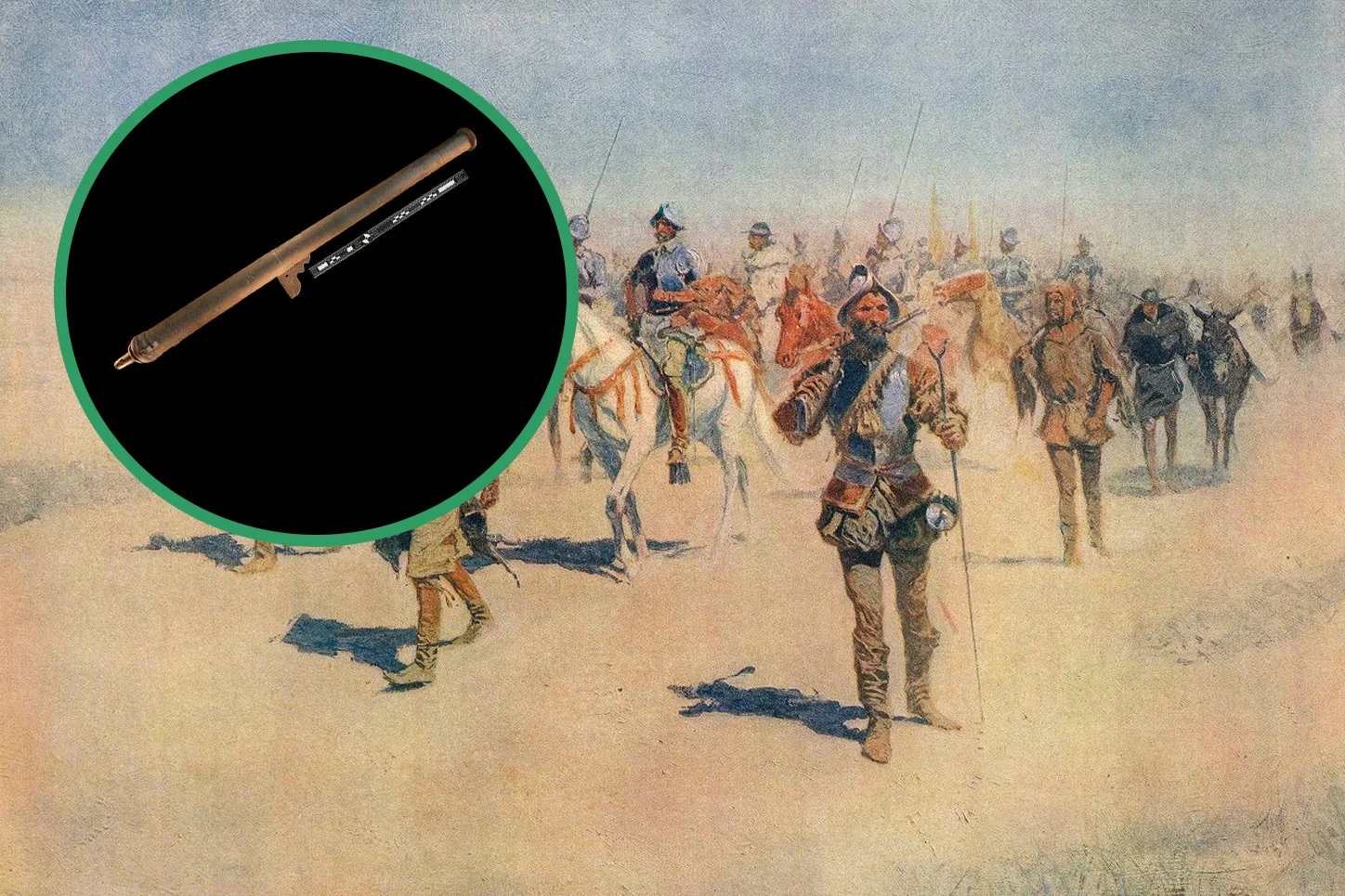Archaeologists have discovered a Bronze cannon or wall gun that has been associated with the Vázquez de Coronado expedition, making it the oldest firearm within the continental USA.
Vázquez de Coronado was a Spanish conquistador who led a large expedition from what is now Mexico to present-day Kansas, through parts of the southwestern United States between 1540 and 1542.
The expedition was searching for the legendary Cities of Cíbola, often referred to now as the mythical Seven Cities of Gold. Coronado followed a path described by Fray Marcos de Niza, but upon arriving in New Mexico, he found that the Cities of Cíbola were simply small indigenous settlements and adobe towns of the pueblos people.
Coronado inflicted significant loss of life on the Puebloans, both through the battles of the Tiguex War and the heavy demands he placed on their fragile economies for food and clothing.
According to a study published in the International Journal of Historical Archaeology, a Bronze cannon or wall gun found on the floor of a Spanish stone-and-adobe structure in Arizona’s Santa Cruz Valley is the first gun known to be associated with the Coronado expedition, and the oldest firearm ever found within the continental USA.
The cannon measures 42 inches in length and is a sand-cast construction that required a large wooden tripod for support. The simple and undecorated design suggests that it was cast in Mexico or the Caribbean, instead of Spain where ornate decorative designs were customary.
This type of artillery piece was generally used on defensive walls, or to breach the wooden or light mudbrick walls of settlements the expedition encountered.
Additional artefacts found in the same context align with the Coronado expedition, including fragments of European pottery and olive jars, pieces of glass, and weapon components.
Header Image Credit : International Journal of Historical Archaeology
Sources : International Journal of Historical Archaeology





